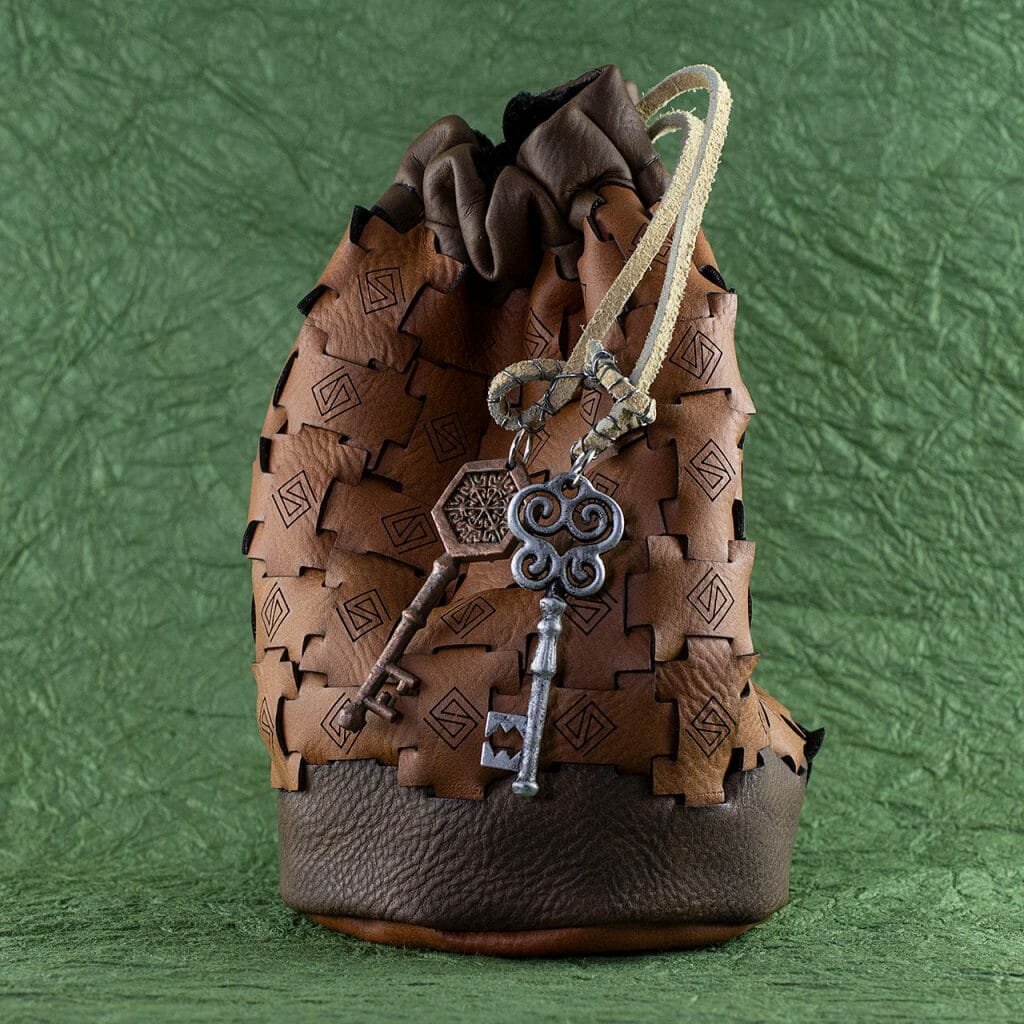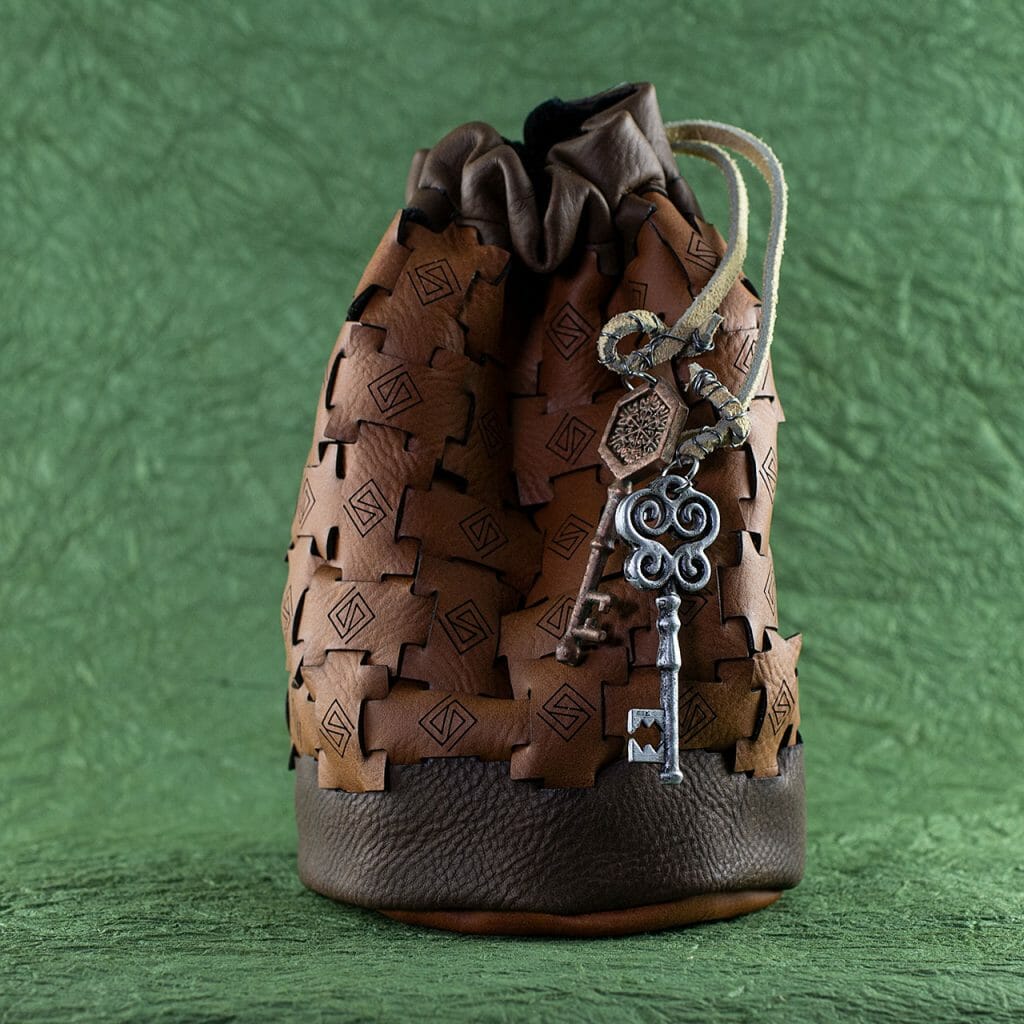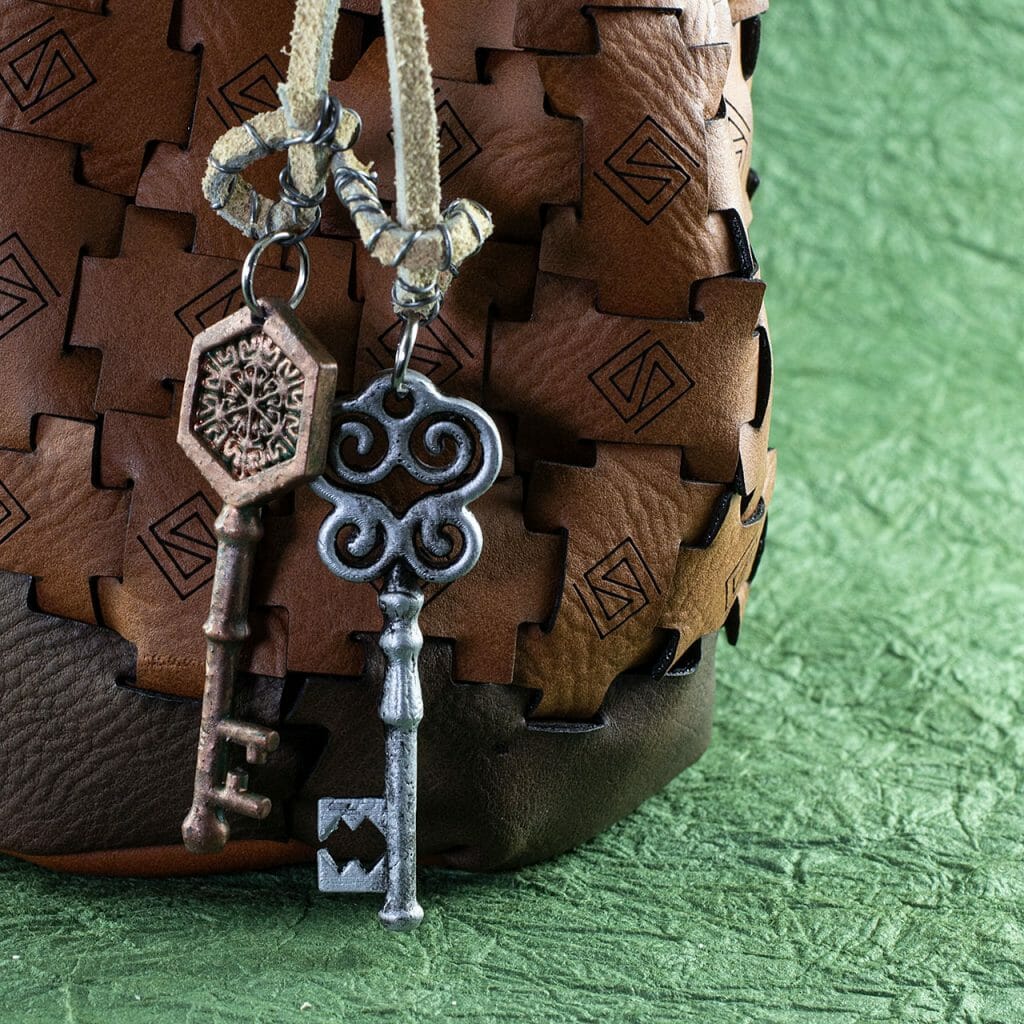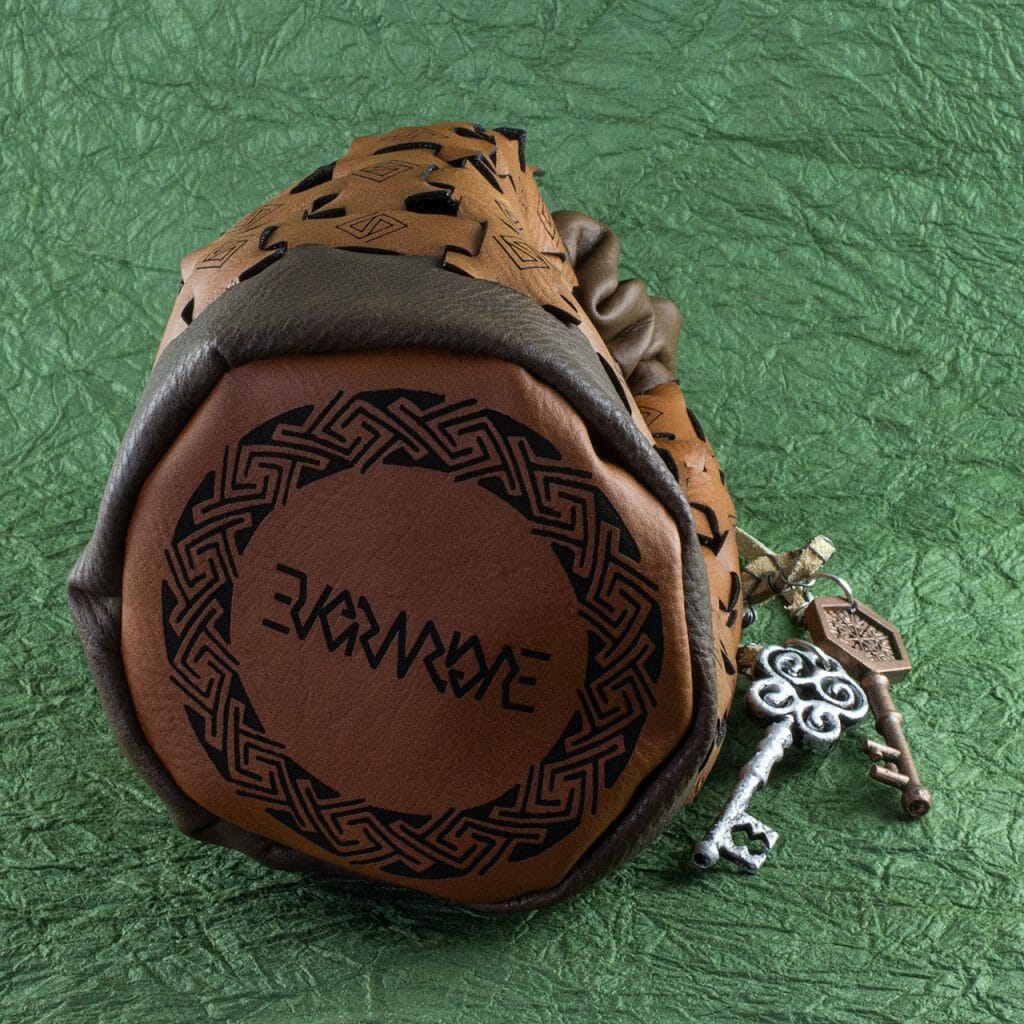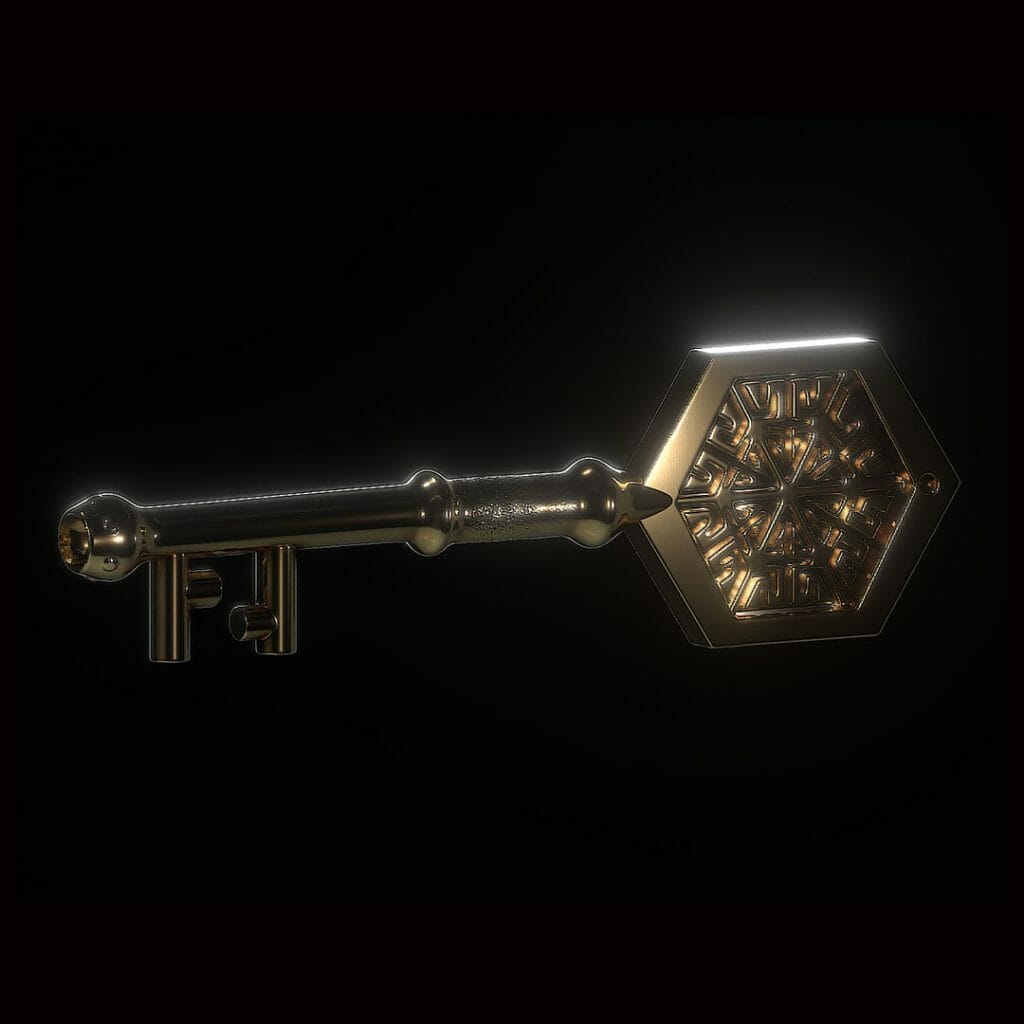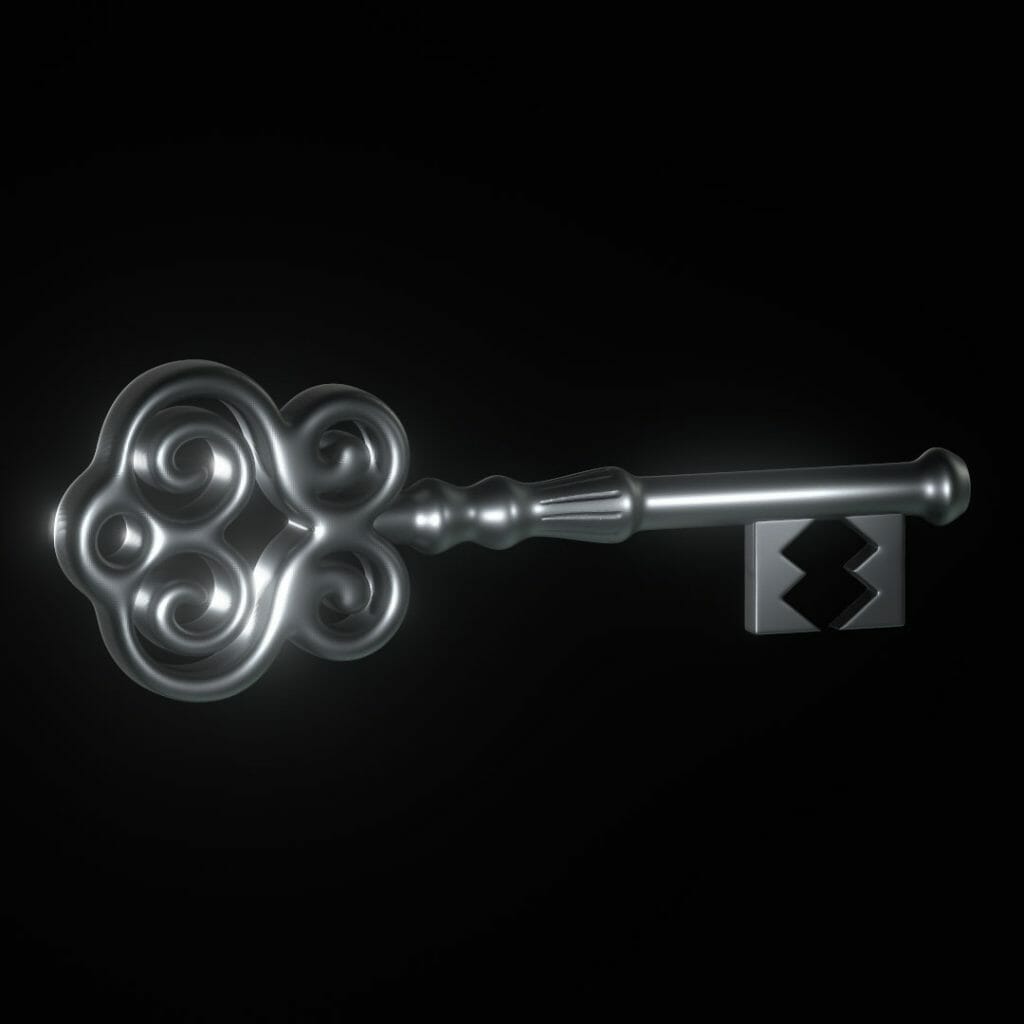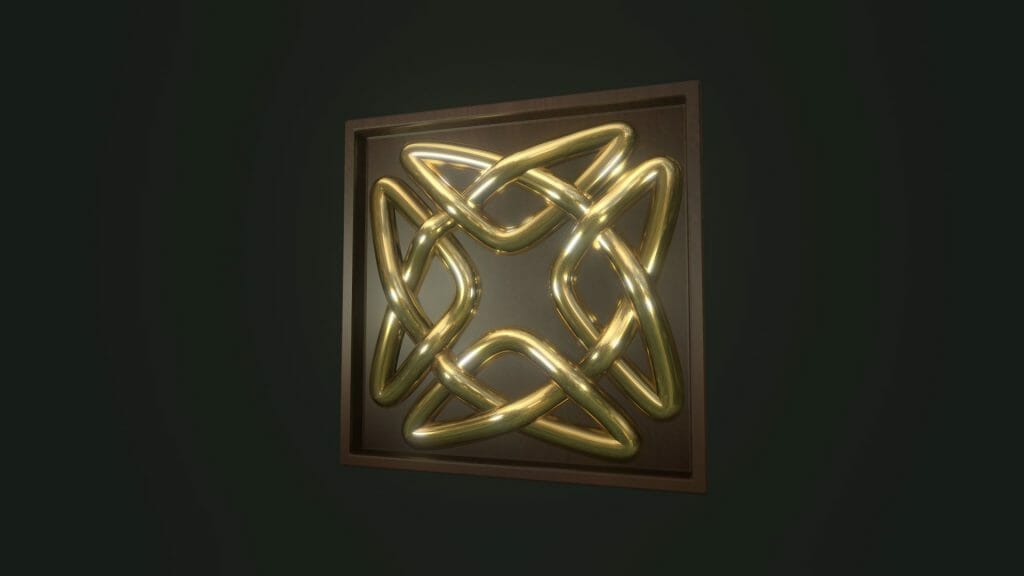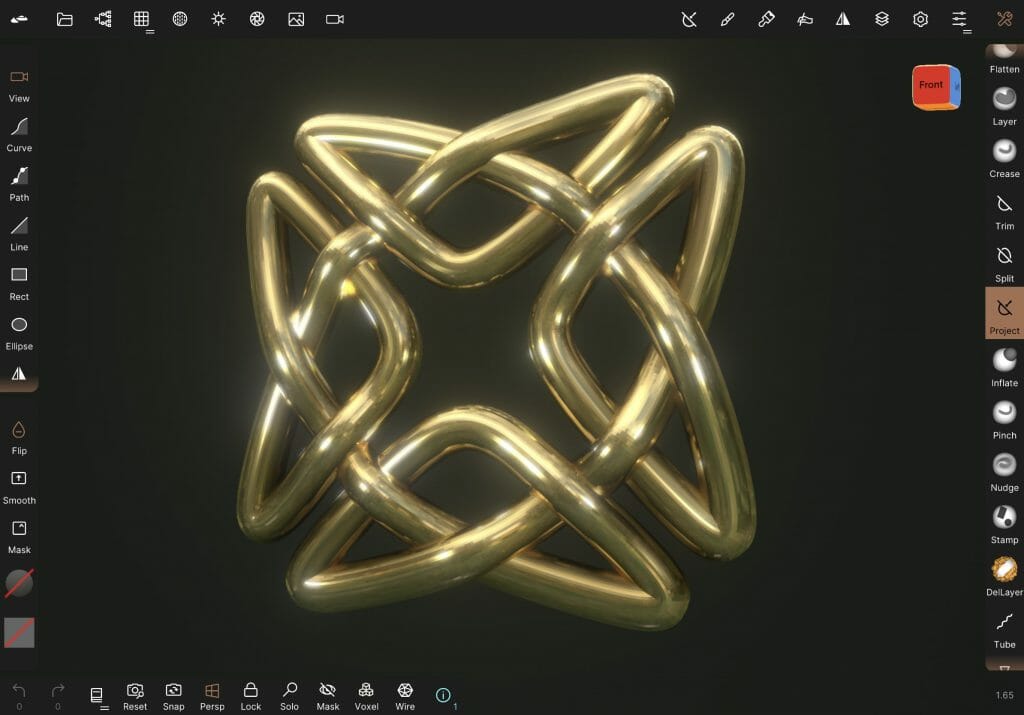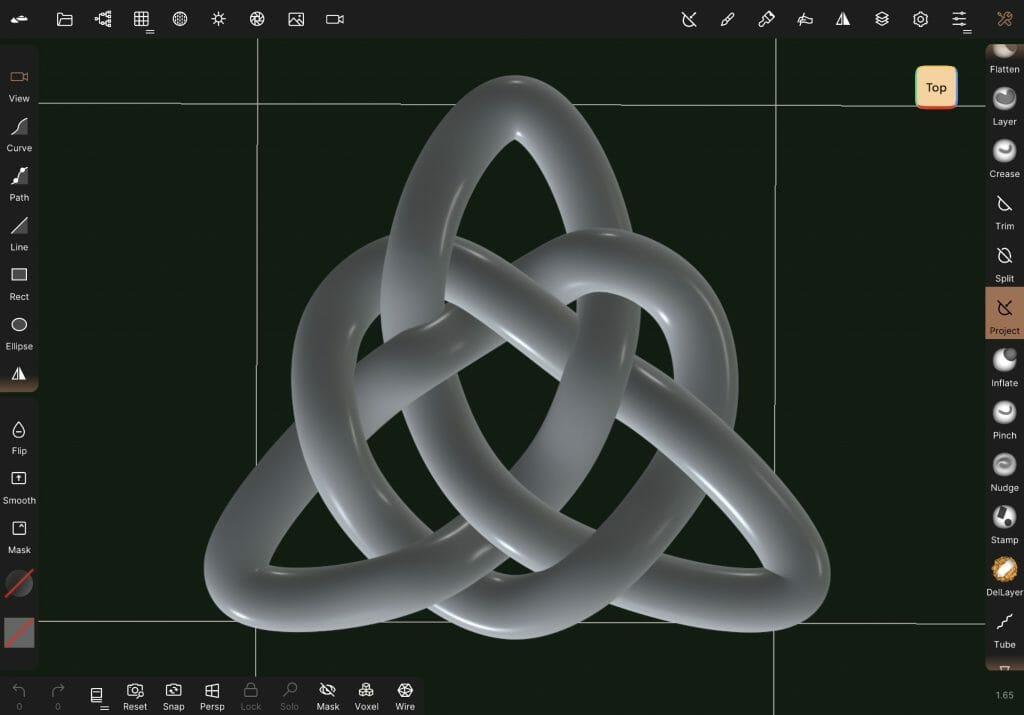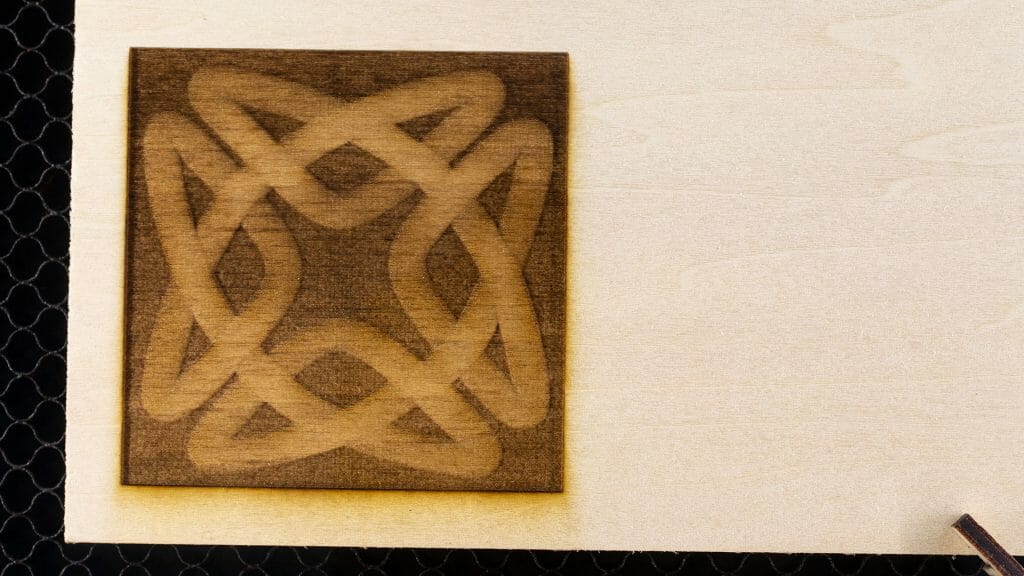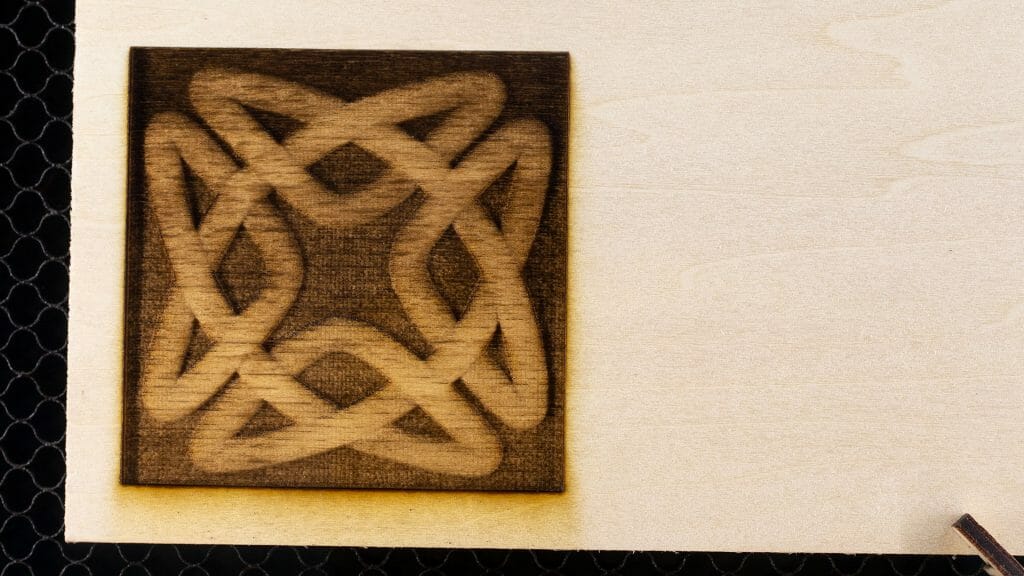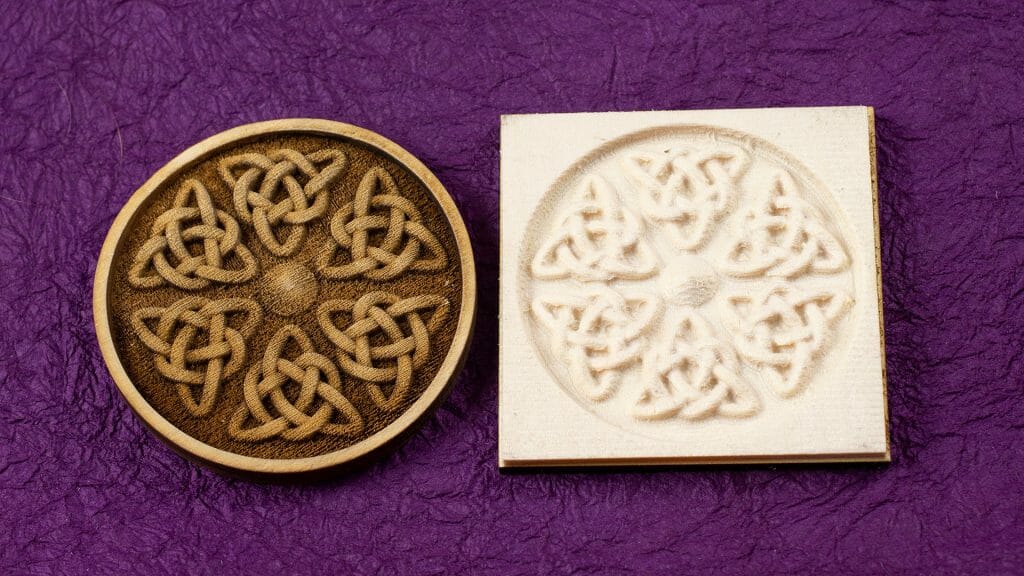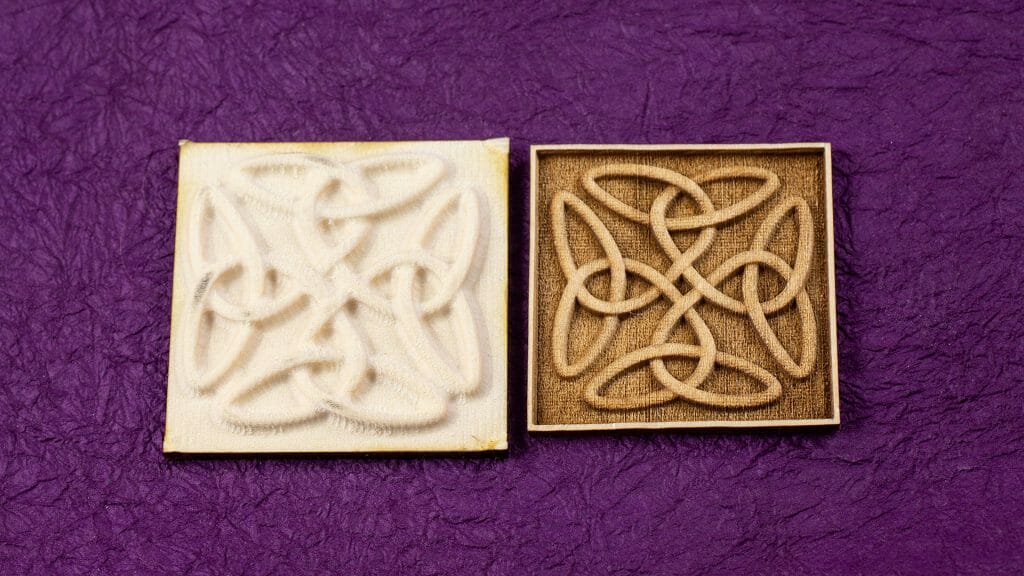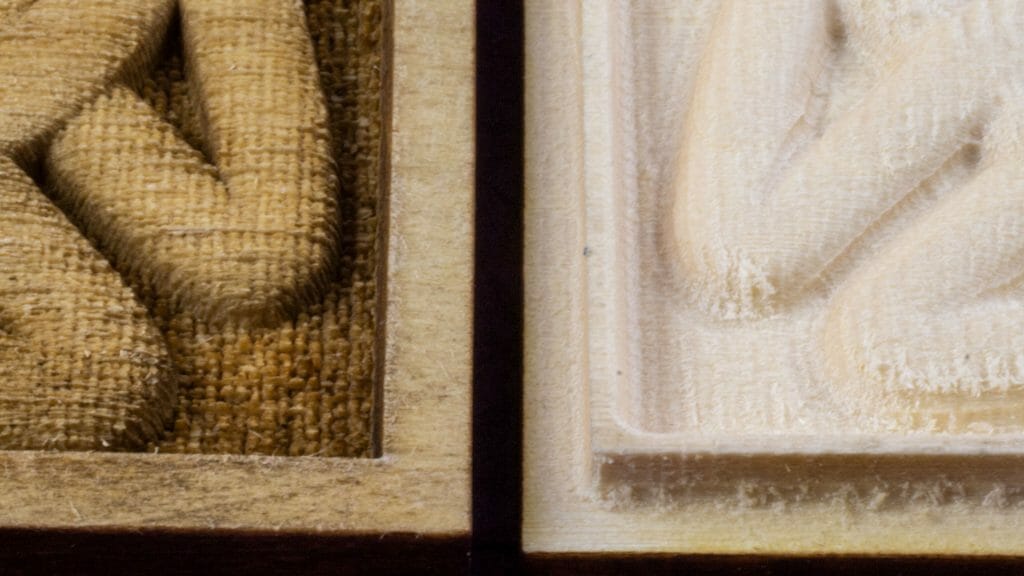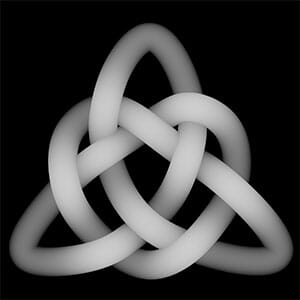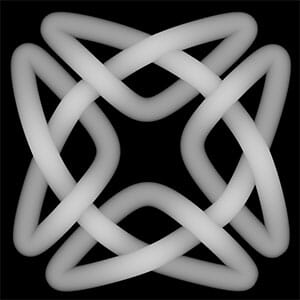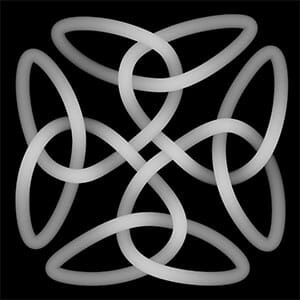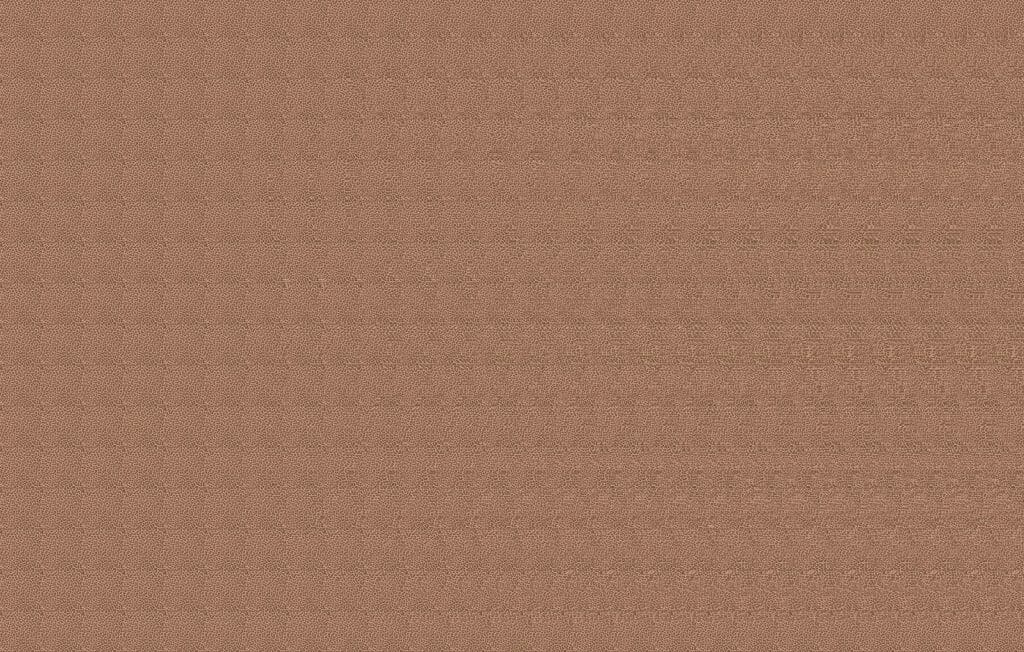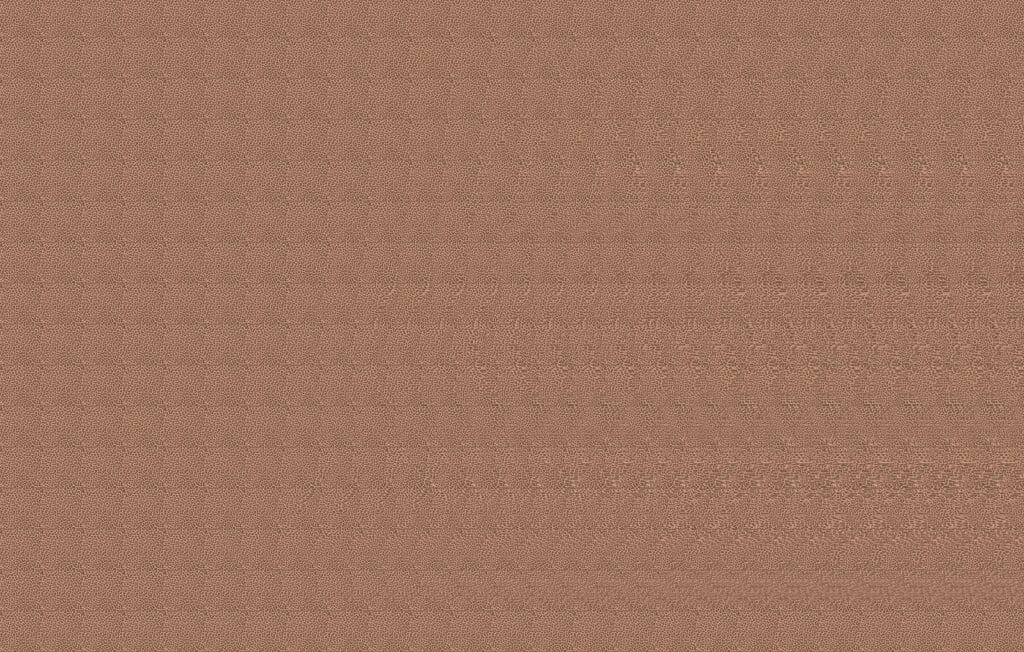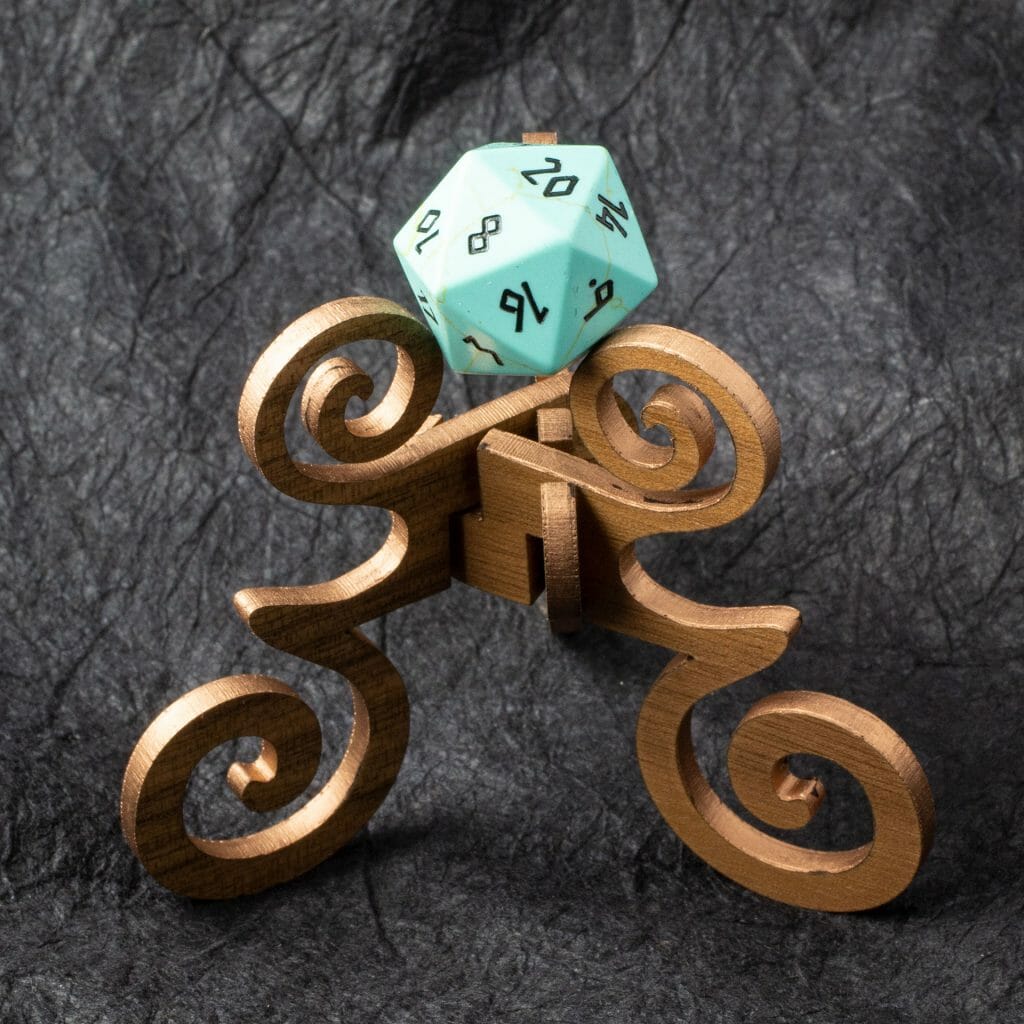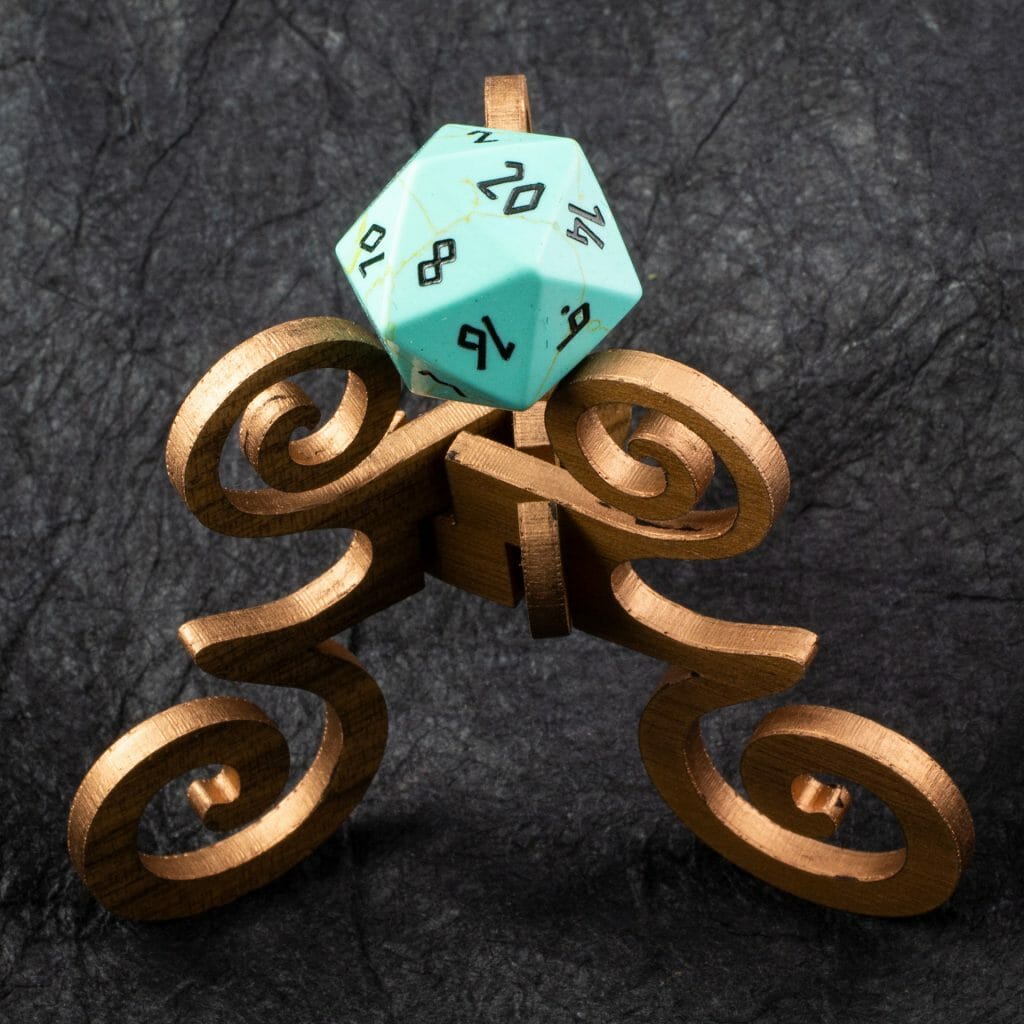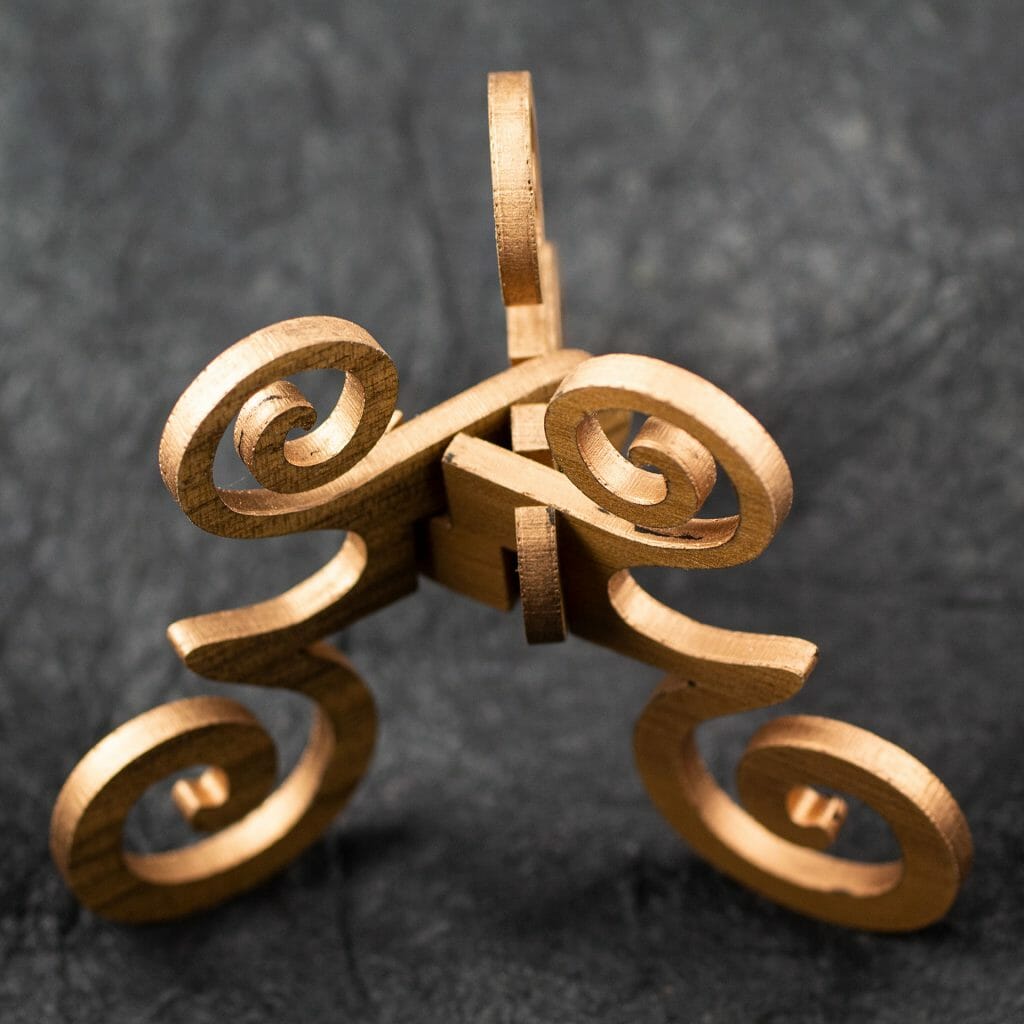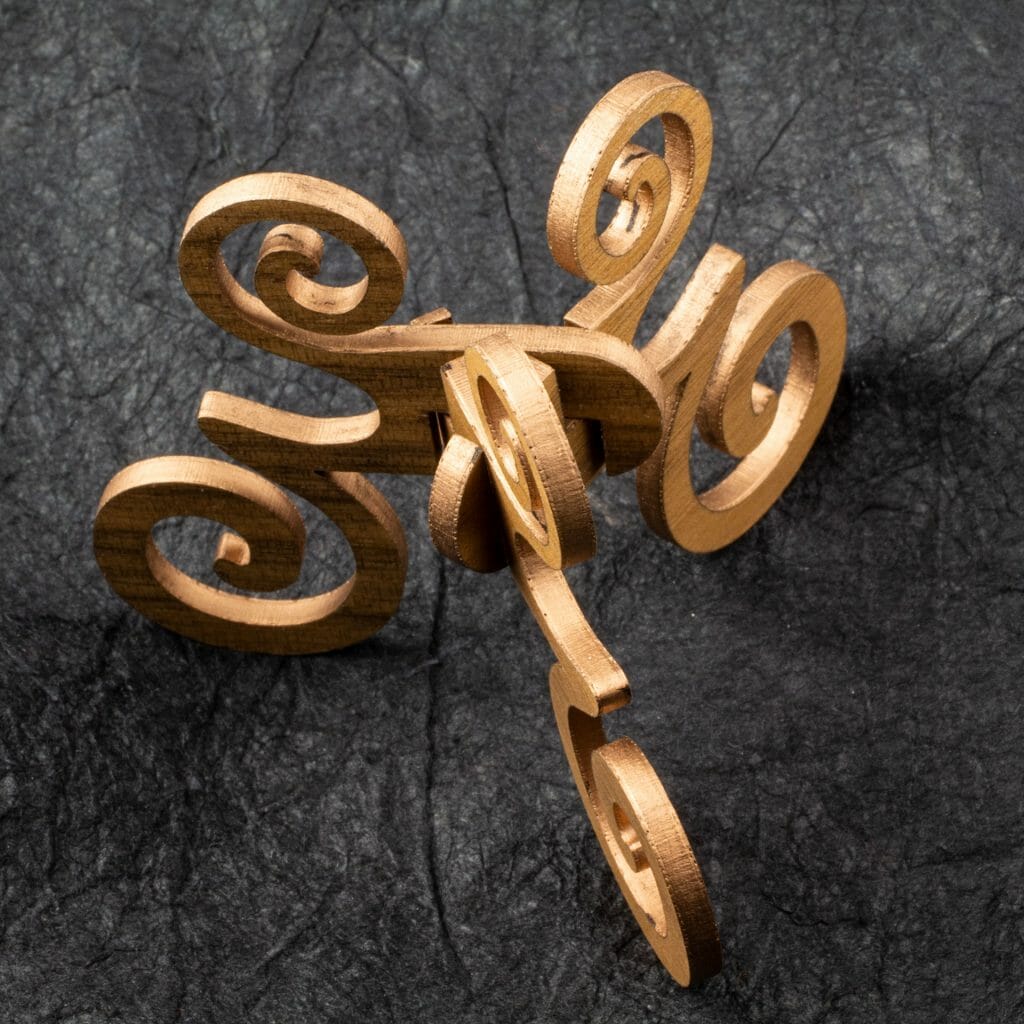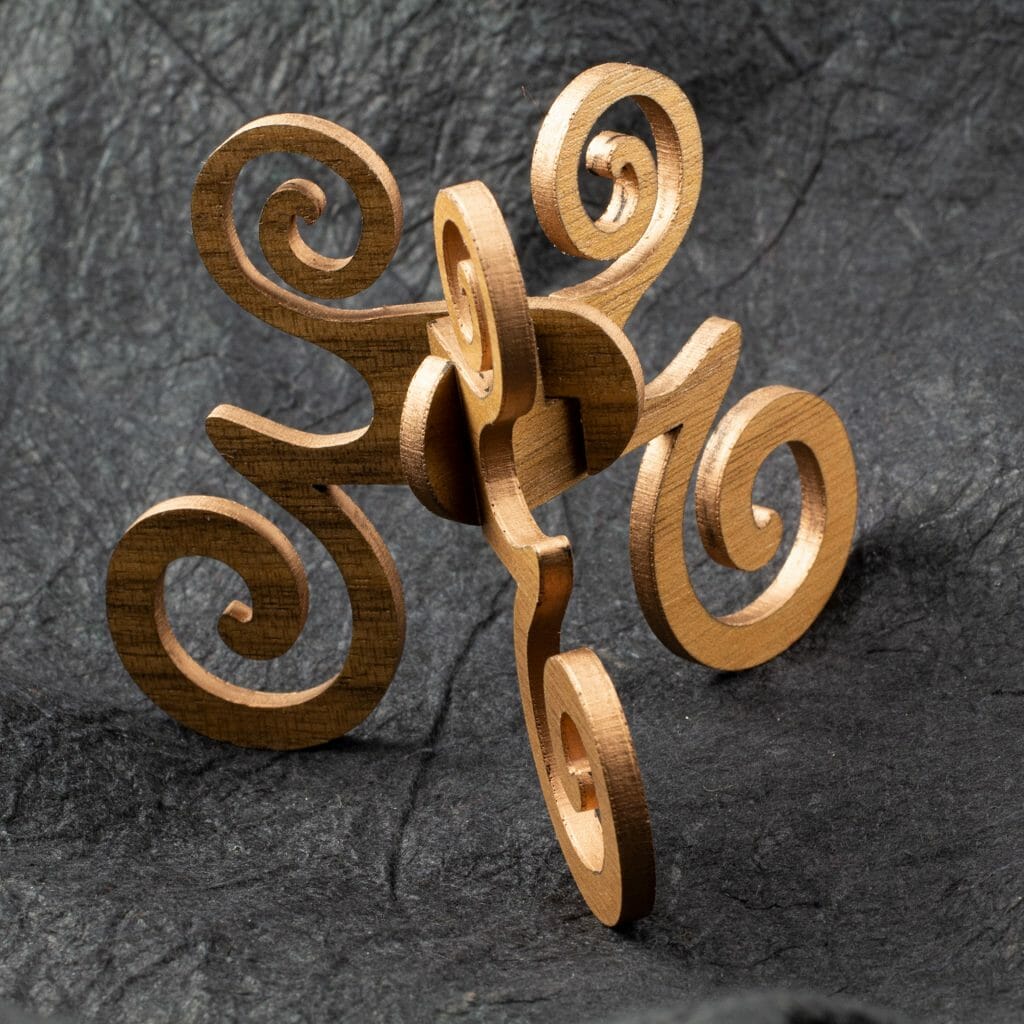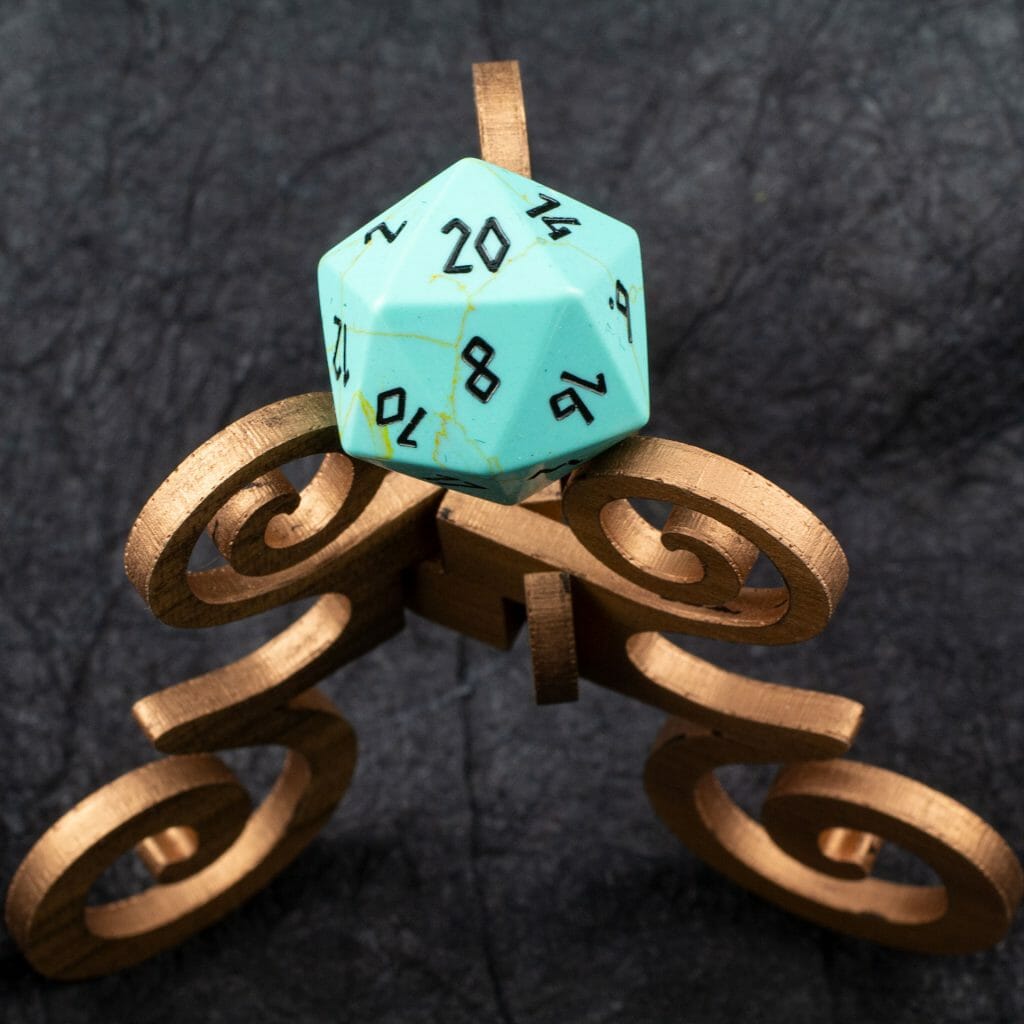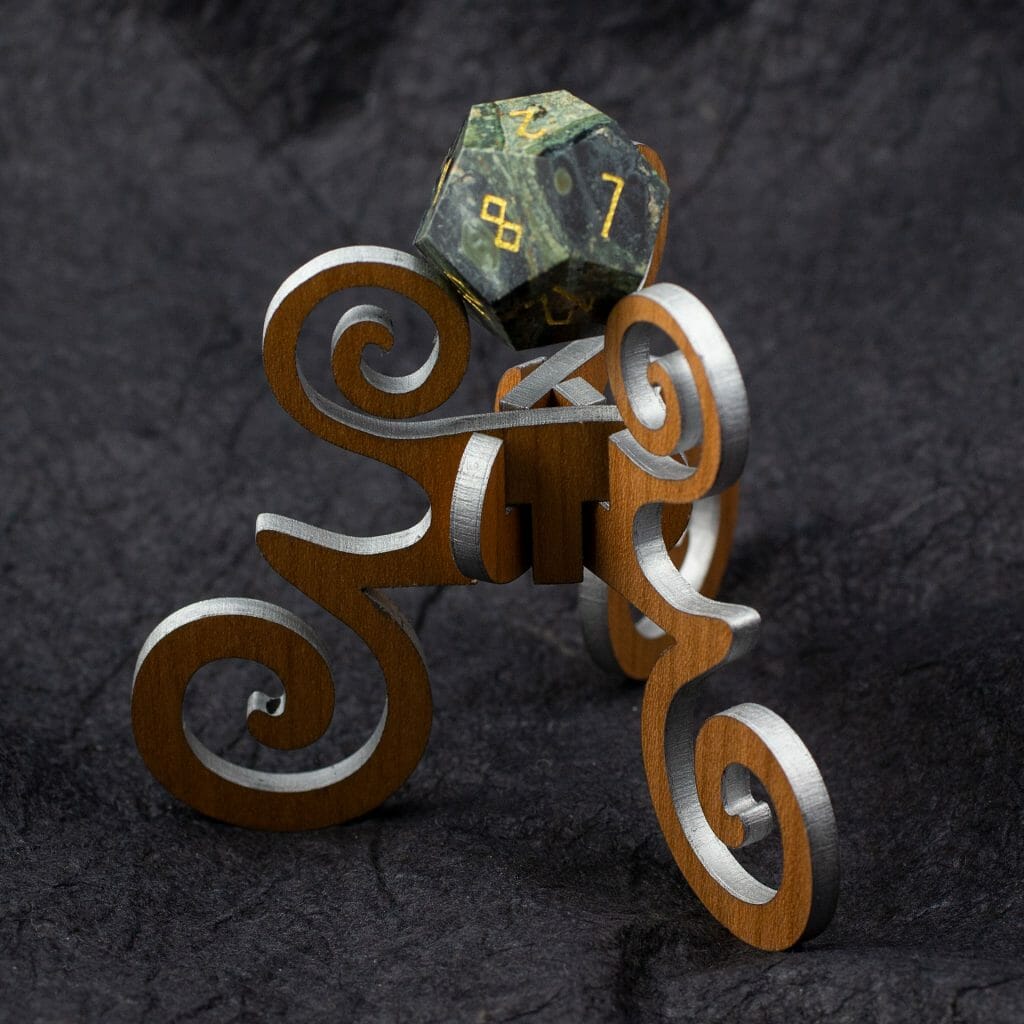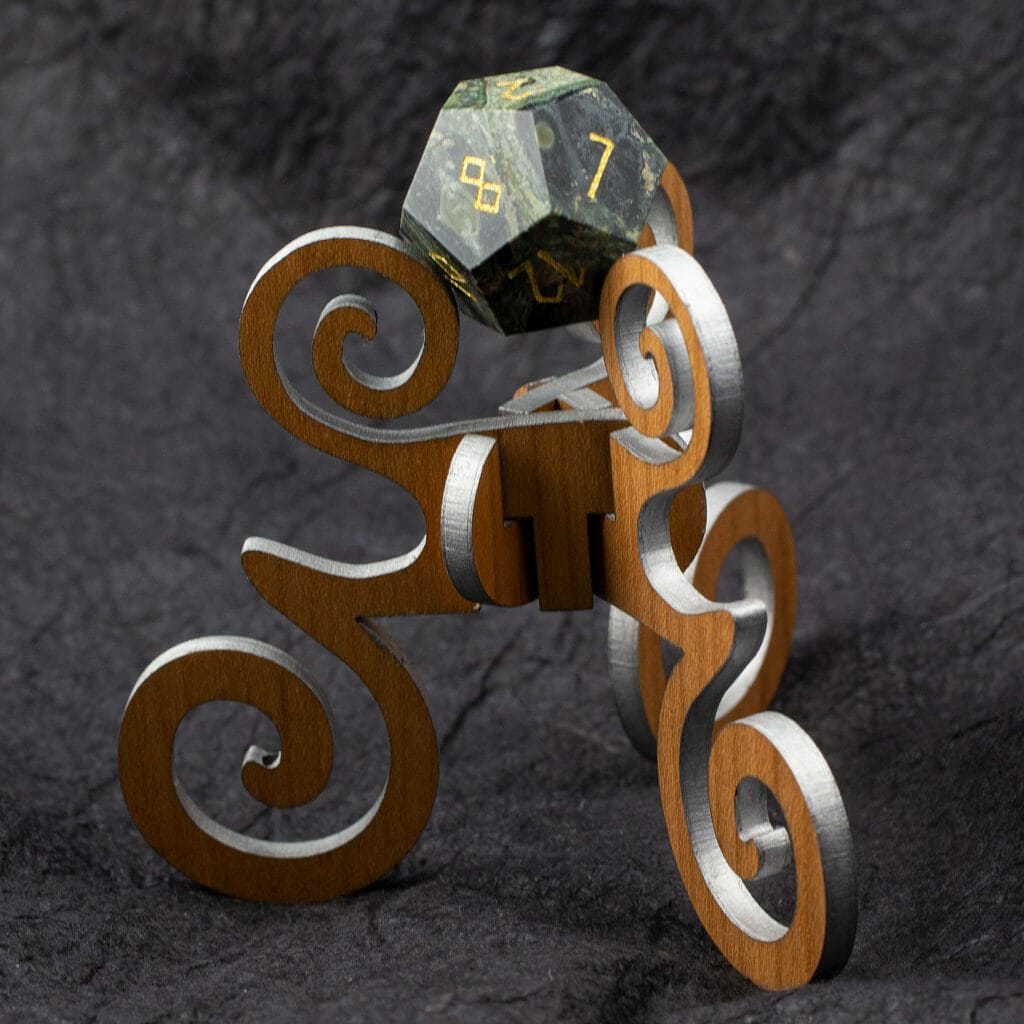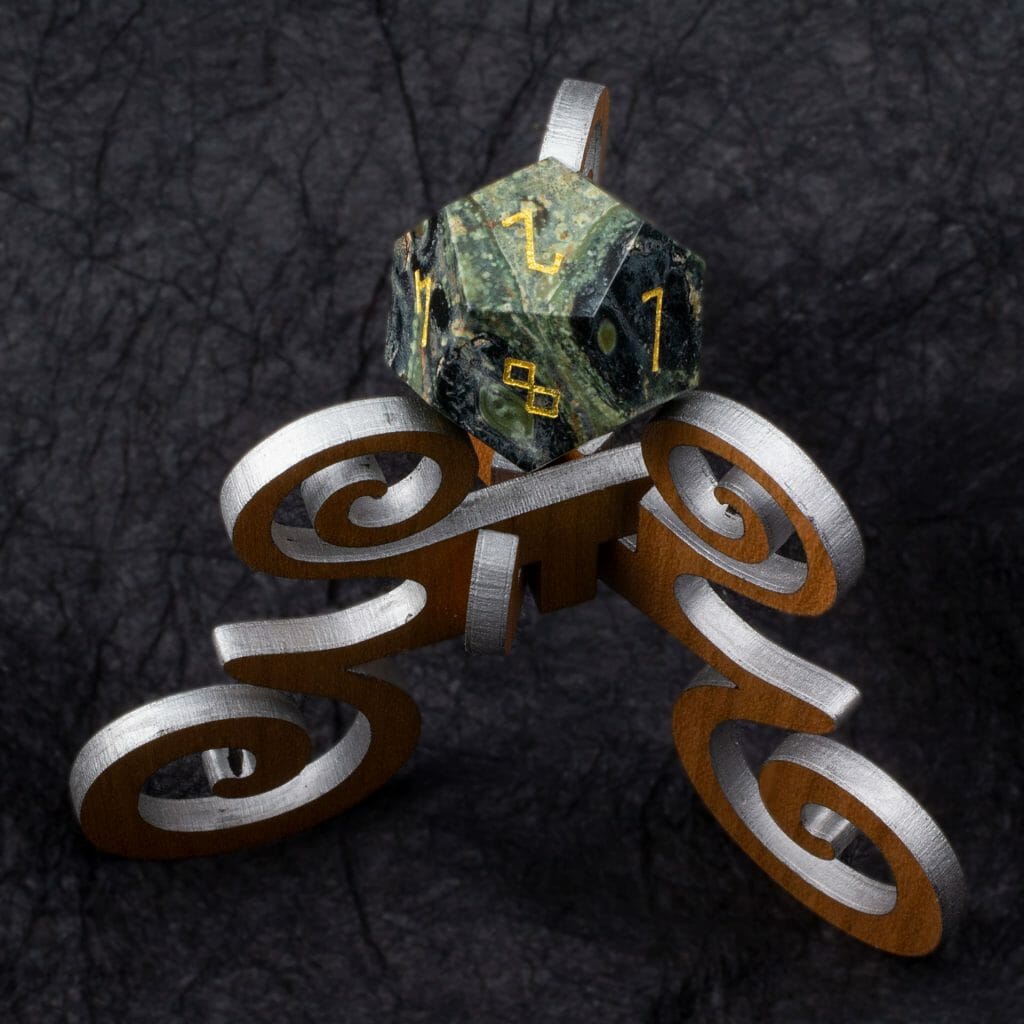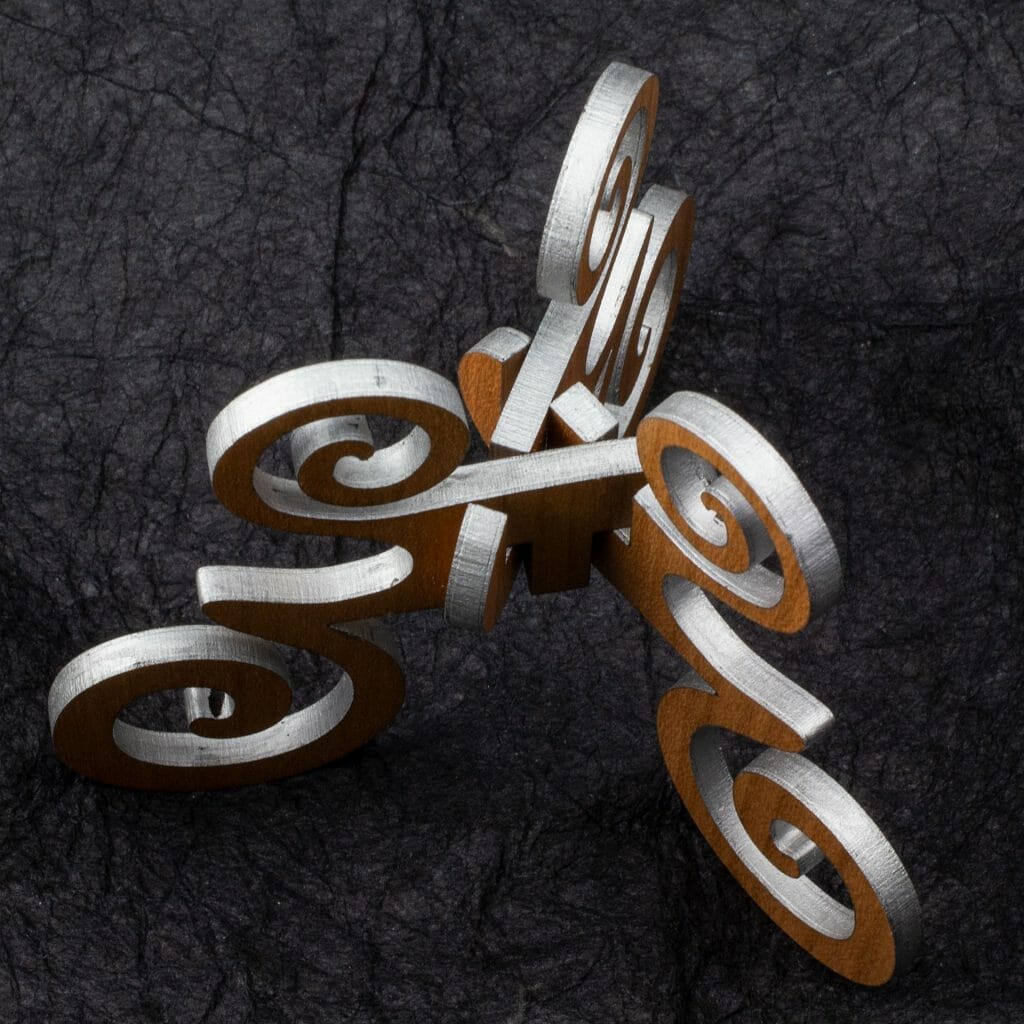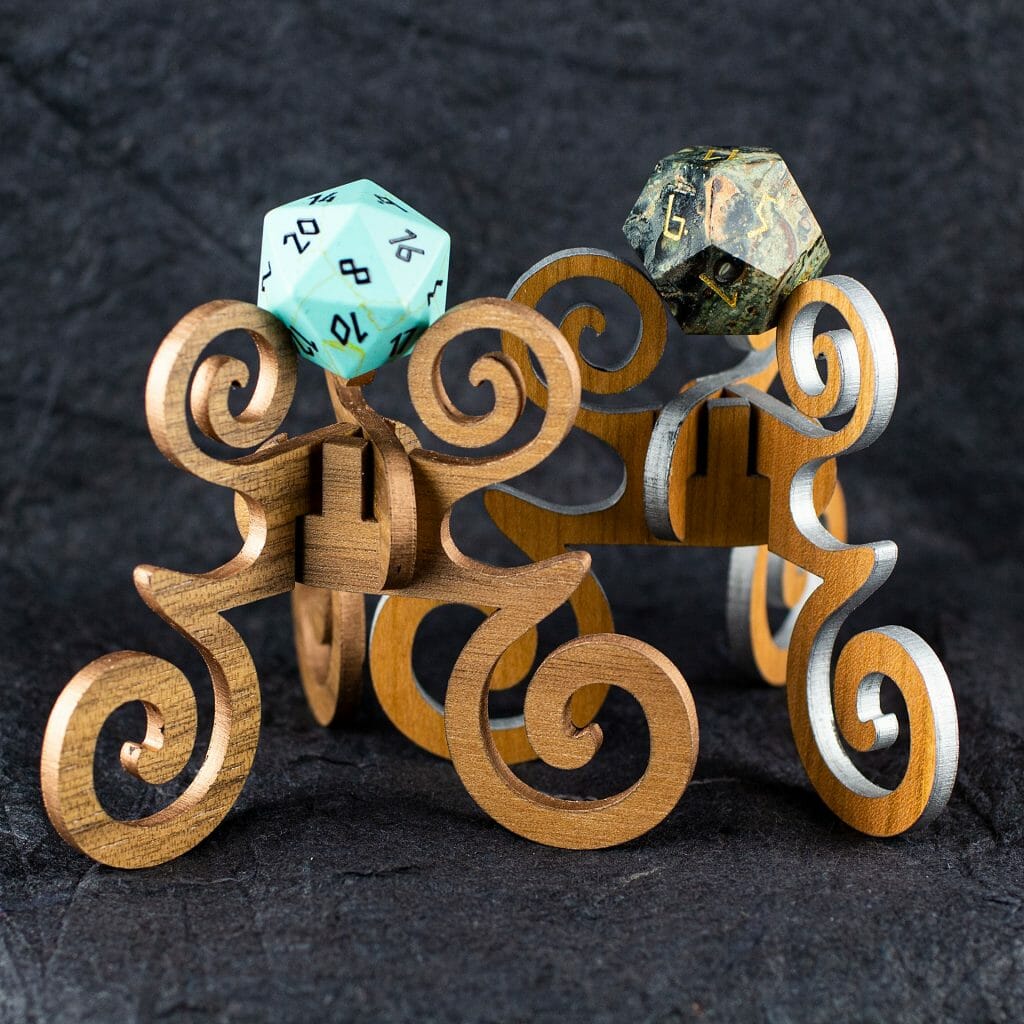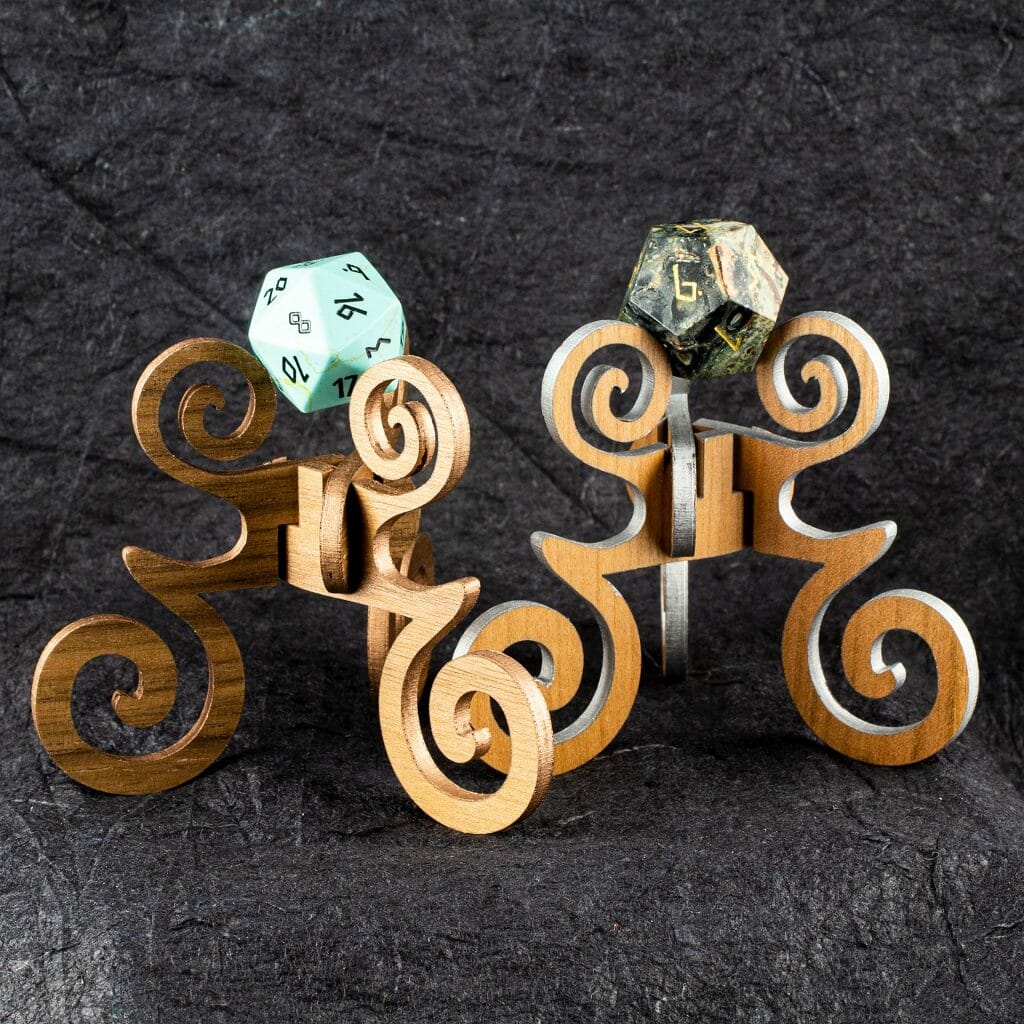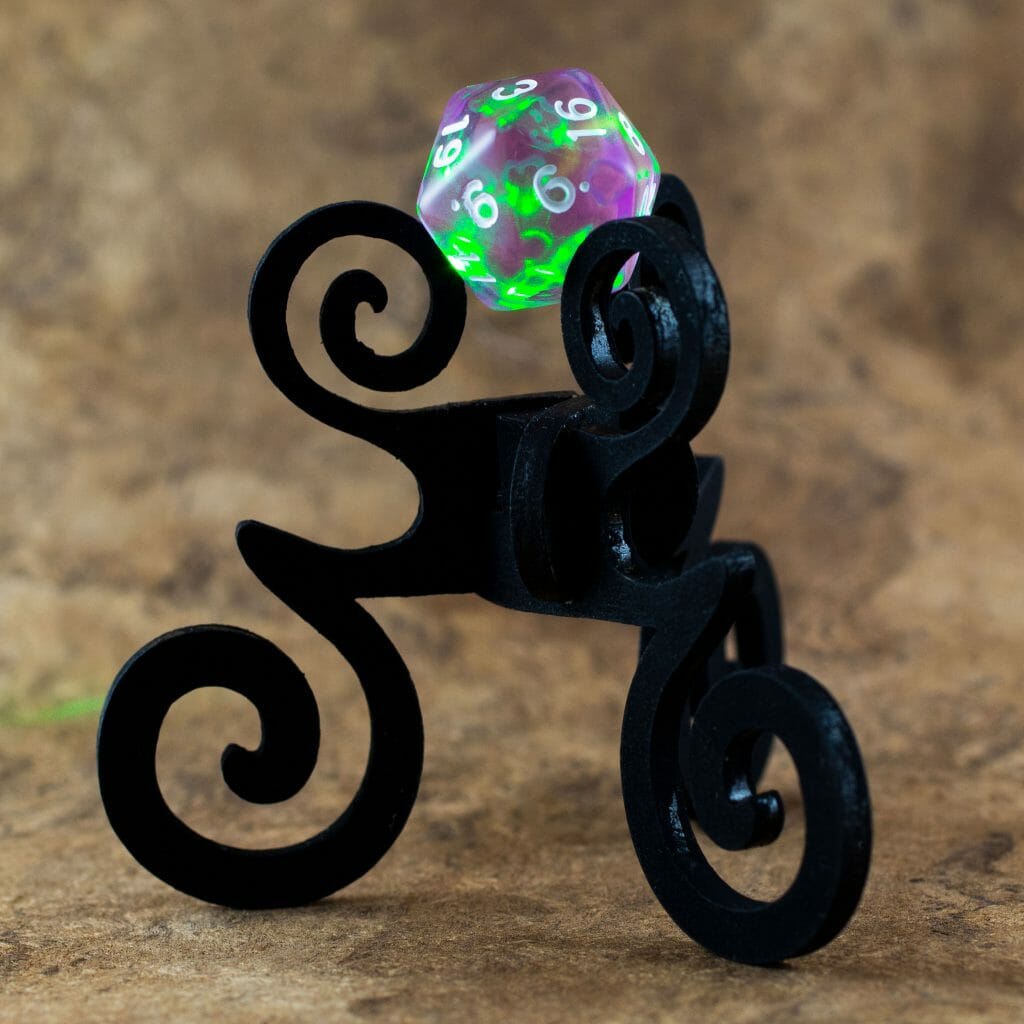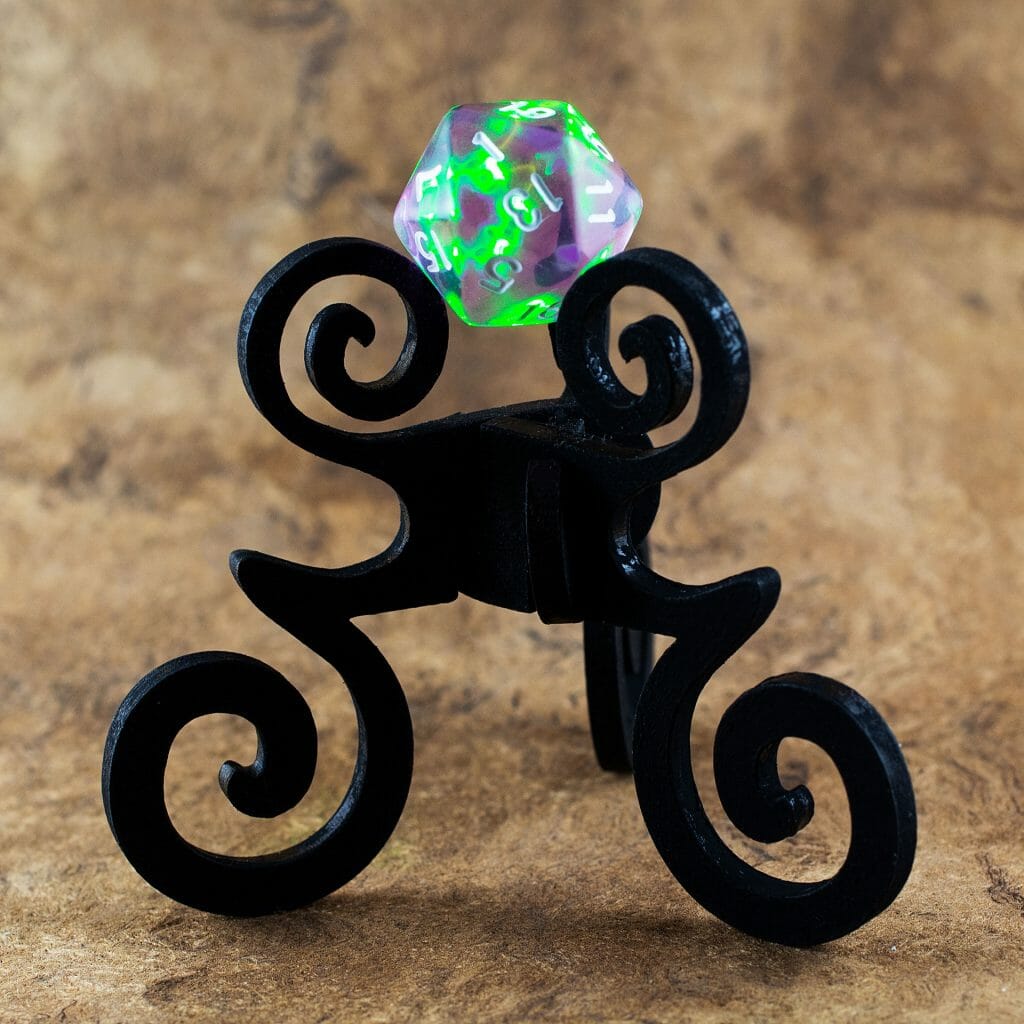Drawstring Key Bag
This scrap (faux) leather bag with a Celtic key theme is an initial exploration of a technique for using small scraps of leather or similar material leftover from other projects. I thought the tiles would be fun with a minimal Celtic key pattern motif in the center of each, then leaned into the theme with a circular key pattern ring on the bottom and, some 3D printed key, sculpted in Nomad Sculpt.
The SVG for the “leather locker” tile is linked below. You will likely want to adjust the slot height to match the thick ness of the material you are using. Let me know if you use it to make anything interesting!
This file is for personal, non-commercial use only. Note that, by referencing these, you are agreeing to release any variations you create under identical terms.
Jack-O-Lantern
A quick jack-o-lantern modeled and (vertex) painted in Nomad Sculpt on the iPad, animated in Blender.
Depthmaps Straight from Nomad Sculpt
This is an update to my last post on modeling Celtic knots in Nomad Sculpt and creating depthmaps in Blender to carve with laser engravers and CNC machines. A newer feature in Nomad Sculpt makes it possible to export a depthmap directly, without having to go through Blender. A checkbox option in the debug menu (named “Heightmap”) switches to a depthmap view, which can be exported as a render. For best results, use a bitmap editor to spread the dynamic range.
I made a short video with a walkthrough:
Celtic Knots in 3D
I came up with a relatively simple workflow for creating 3D models of Celtic knots, used those to create depth maps and, used the depth maps to do 3D carvings on the Glowforge and the Nomad 883 desktop CNC. The modeling process goes from a pencil sketch through Inkscape to produce a reference image, then into Nomad Sculpt (which has no direct association with the Nomad 883 CNC machine, despite the name collision) on the iPad to model the knot. I exported the knot models to Blender to make the depth maps, which are, in turn, used by the Glowforge UI and MeshCAM to create appropriate jobs for their respective machines.
If you are interested in modeling Celtic knots in 3D, I made a video walking through the workflow. It’s longer than a lot of my videos at around 16 minutes but, I try not to waste too much of your time watching software interface fumbling or machines running. There are also chapter markers in the video description if you just want a particular segment. Let me know if you find any of it useful.
Celtic Spirals Bookmarks
Slotted Dice Reliquary
I had an idea for a slotted tripod stand design and, thought it would be fun to work out the details. These dice reliquaries are the result.
These are laser-cut from walnut and cherry plywood with edges colored with copper and silver metallic Sharpies, respectively. I also finished my MDF prototype with Black 3.0.
I made a short video showing of the design and manufacturing process, along with some beauty shots.
Update: You can now purchase one of these wooden dice reliquaries for your favorite die! They are available at the Adventuring Club website or, from Board Game Geek.

